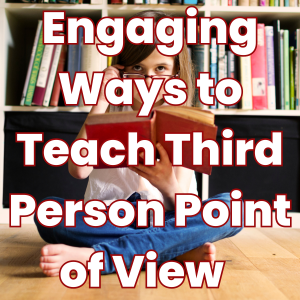Making lyric poetry fun and engaging for grade 5 students can feel like a bit of a challenge, right? But what if you had one amazing resource that not only fits perfectly with the new Alberta curriculum but also gets your students excited and inspired to write? That’s exactly what you’ll find in the powerful book Life Doesn’t Frighten Me by Maya Angelou, brought to life with Jean-Michel Basquiat’s stunning illustrations.
What Is Lyric Poetry?
Before we jump into the book itself, it’s important to establish what lyric poetry is, especially since it’s a newer focus in the Alberta grade 5 curriculum. Lyric poetry uses a personal tone, often expressing thoughts, experiences, or emotions in a powerful but structured way. Unlike narrative poetry, which tells a story with a beginning, middle, and end, lyric poetry gives more weight to sound, feeling, and imagery.
Using this form of poetry, we can guide students to explore creative expression while practicing new curriculum outcomes like identifying how words evoke emotions, interpreting rhythm, and fostering their own voice through writing.
Why Life Doesn’t Frighten Me Is Perfect for Teaching Lyric Poetry
1. Relatable and Inspiring for Students
Maya Angelou’s poem, paired with Jean-Michel Basquiat’s bold illustrations, captures the heart of lyric poetry! The simple yet powerful language touches on themes like courage, resilience, and overcoming fear—ideas that really resonate with Grade 5 students as they navigate their own emotions.
Using Life Doesn’t Frighten Me in your classroom creates an opportunity for students to connect deeply, inspiring them to tie their personal feelings to the words they write.
If this sounds like the kind of meaningful activity you’re looking for, I’ve got more ideas and ready-to-use resources to make your planning even easier.
2. Attention-Grabbing Visuals with Big Impact
Jean-Michel Basquiat’s art takes Angelou’s words to a whole new level. His edgy, vibrant illustrations are a perfect match for the raw emotions of lyric poetry. For visual learners, this is a total win! The abstract, sometimes chaotic style helps students see how emotions and artistic choices work together to convey powerful messages.
Want to maximize the impact? After reading the poem, challenge your students to create their own artwork inspired by Basquiat’s style. It’s a fun way to help them explore how visual art can amplify the meaning of their poetry.
How to Teach Lyric Poetry with Life Doesn’t Frighten Me in 6 Simple Steps
Step 1: Read the Poem Aloud
Start by reading Life Doesn’t Frighten Me to your class. Read it twice—once to let the words sink in and again to encourage students to focus on the rhythm and emotions.
Ask questions like:
- How does the repetition of “Life doesn’t frighten me at all” make you feel?
- Where does the mood of the poem shift?
- What words help you imagine what the poet might be experiencing?
This sets the stage for meaningful discussions.
Step 2: Break Down Lyric Poetry
After the read-aloud, introduce the key features of lyric poetry:
- Emotion: What feelings does the poem bring out?
- Imagery: What pictures do the words create in your mind?
- Repetition/Rhythm: Why are certain phrases repeated?
Use the poem as an example to help students spot these characteristics and discuss how they make the poem so engaging. This ties directly into the Alberta curriculum outcomes for analyzing text.
Step 3: Make It Personal
Help students connect the themes in the poem to their own lives. Ask them to brainstorm everyday challenges like fear or courage. You can use prompts like:
- “What’s one thing that makes you feel brave?”
- “What’s a fear that feels big to you?”
This step encourages self-reflection and lays the foundation for their poetry writing.
Step 4: Guide Students in Writing Lyric Poetry
Provide students with a structure to help them start writing. For example, you might use a template like:
- “I feel _____ when I face _____, but I remind myself _____.”
Encourage them to play with imagery, repetition, and rhythm, using Life Doesn’t Frighten Me as inspiration. Need a head start? Check out these ready-to-print lyric poetry templates to make your prep a breeze!
Step 5: Add a Creative Touch with Art
Get your students thinking like Basquiat! Have them illustrate their poems with abstract shapes and bold colors that reflect their emotions. This is a fantastic way to integrate art and language while meeting Alberta curriculum outcomes that focus on creativity.
Step 6: Celebrate with a Poetry Slam
Wrap up the lesson with a mini poetry slam or gallery walk. Let students perform their poems or display their artwork for the class. Encourage positive feedback and celebrate each student’s creative voice. It’s a great way to build community while showcasing their hard work!
Extra Resources for Teaching Lyric Poetry
Excited to bring this lesson to your classroom? Whether you’re looking for more ideas, print-and-go resources, or templates to make lyric poetry lessons a snap, I’ve got you covered. Let’s make poetry a highlight of your year! My Grade 5 English Language Arts resources align seamlessly with the Alberta new curriculum while simplifying the complexities of poetry instruction.

Explore more teacher-approved resources here!
Are you ready to transform the way you teach lyric poetry this year? Start your lesson planning with resources designed just for you.




